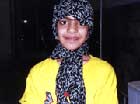
Runaway 2001
Distributed by Women Make Movies, 462 Broadway, #500, New York, NY 10013; 212-925-0606
Producer n/a
Directed by Kim Longinoto, Ziba Mir-Hosseini
VHS, color, 87 min., In Farsi with English subtitles
High School - Adult
Adolescence, Human Rights, Social Work, Women's Studies, Middle Eastern Studies
Date Entered: 11/09/2018
Reviewed by Homa Naficy, Coordinator, The American Place: A Resource Center for Immigrants and Refugees, Hartford Public Library, Hartford, CTAt first nothing strikes you out of the usual with Runaway. It is a straightforward documentary of exchanges between counselors at a women’s shelter and adolescent girls who have run away from abusive homes. Their conversations and their daily activities are captured with authenticity and simplicity.
A diverse range of experience is depicted. The tragedies of incest, arranged marriages, partner abuse, and oppressive parents will resonate with adolescents everywhere. What make Runaway unique are the stories brought to us from a corner of our world where the girls have few means of escape or refuge. Reyhaneh House, the setting of this film, is Iran's first home for fugitive girls. Located in Tehran, it is a rare institution, struggling to survive and to address what is escalating into a national crisis. According to The Independent (London, November 13, 2000) only 13 of the 45 girls reported missing each day return home. The remainder are believed to be raped and/or killed.
Runaway is a poignant documentary, which advocates for very basic human rights. In a country where the government sets the marriage age at nine for girls and fourteen for boys, where family problems are culturally never discussed outside the home, where woman are at best considered chattel, admitting to the existence of runaways would be an embarrassment to the virtues of an Islamic government. Runaway is a breakthrough for bringing to light the unarguable need for a host of Reyhaneh Houses.
The film’s subtitles and overall filming is not very crisp, but its message is clear. The film could be successfully used to spearhead discussion among a broad audience in high schools, colleges, and public library settings.